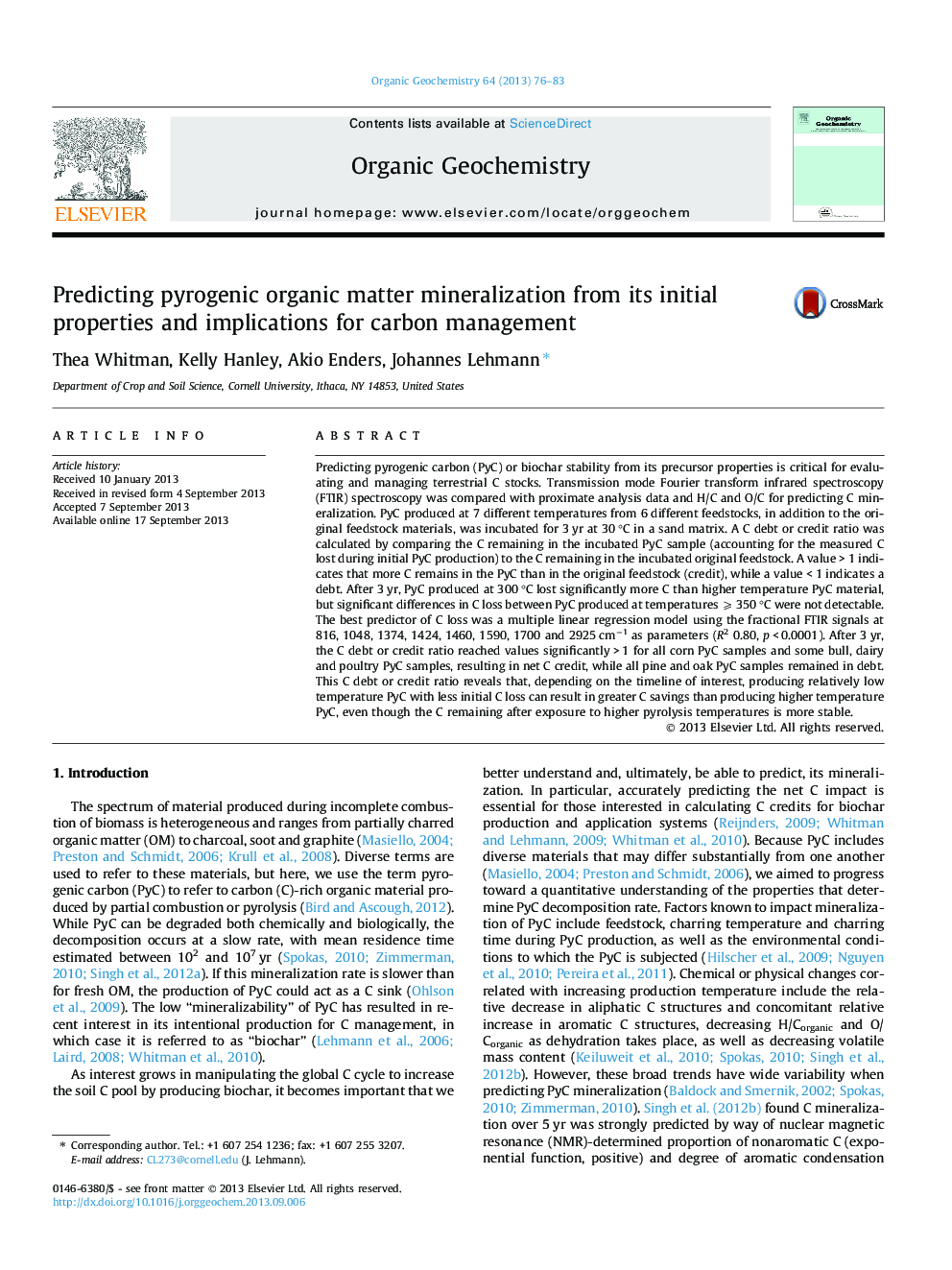| کد مقاله | کد نشریه | سال انتشار | مقاله انگلیسی | نسخه تمام متن |
|---|---|---|---|---|
| 5163027 | 1502297 | 2013 | 8 صفحه PDF | دانلود رایگان |
عنوان انگلیسی مقاله ISI
Predicting pyrogenic organic matter mineralization from its initial properties and implications for carbon management
ترجمه فارسی عنوان
پیش بینی کانه زایی مواد آلی پیرژنیک از خواص و پیامدهای اولیه آن برای مدیریت کربن
دانلود مقاله + سفارش ترجمه
دانلود مقاله ISI انگلیسی
رایگان برای ایرانیان
موضوعات مرتبط
مهندسی و علوم پایه
شیمی
شیمی آلی
چکیده انگلیسی
Predicting pyrogenic carbon (PyC) or biochar stability from its precursor properties is critical for evaluating and managing terrestrial C stocks. Transmission mode Fourier transform infrared spectroscopy (FTIR) spectroscopy was compared with proximate analysis data and H/C and O/C for predicting C mineralization. PyC produced at 7 different temperatures from 6 different feedstocks, in addition to the original feedstock materials, was incubated for 3 yr at 30 °C in a sand matrix. A C debt or credit ratio was calculated by comparing the C remaining in the incubated PyC sample (accounting for the measured C lost during initial PyC production) to the C remaining in the incubated original feedstock. A value > 1 indicates that more C remains in the PyC than in the original feedstock (credit), while a value < 1 indicates a debt. After 3 yr, PyC produced at 300 °C lost significantly more C than higher temperature PyC material, but significant differences in C loss between PyC produced at temperatures ⩾ 350 °C were not detectable. The best predictor of C loss was a multiple linear regression model using the fractional FTIR signals at 816, 1048, 1374, 1424, 1460, 1590, 1700 and 2925 cmâ1 as parameters (R2 0.80, p < 0.0001). After 3 yr, the C debt or credit ratio reached values significantly > 1 for all corn PyC samples and some bull, dairy and poultry PyC samples, resulting in net C credit, while all pine and oak PyC samples remained in debt. This C debt or credit ratio reveals that, depending on the timeline of interest, producing relatively low temperature PyC with less initial C loss can result in greater C savings than producing higher temperature PyC, even though the C remaining after exposure to higher pyrolysis temperatures is more stable.
ناشر
Database: Elsevier - ScienceDirect (ساینس دایرکت)
Journal: Organic Geochemistry - Volume 64, November 2013, Pages 76-83
Journal: Organic Geochemistry - Volume 64, November 2013, Pages 76-83
نویسندگان
Thea Whitman, Kelly Hanley, Akio Enders, Johannes Lehmann,
